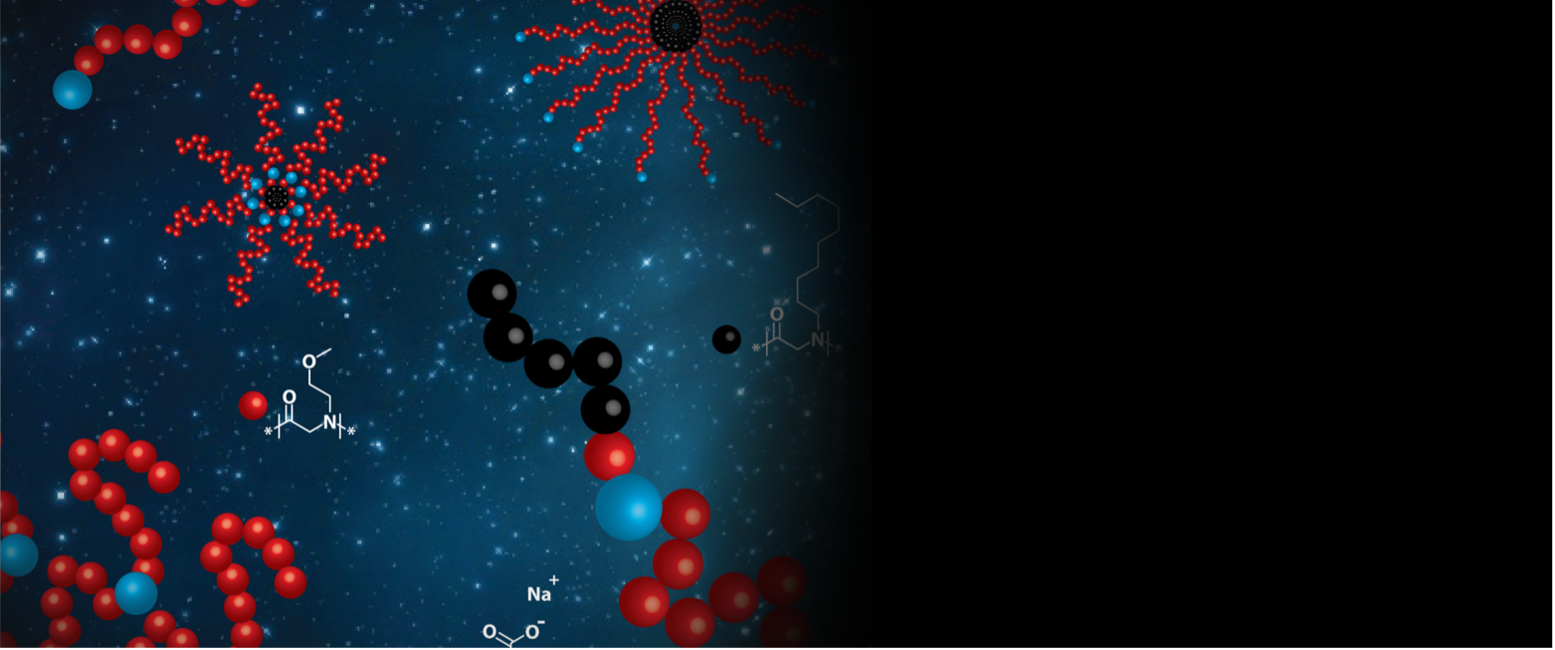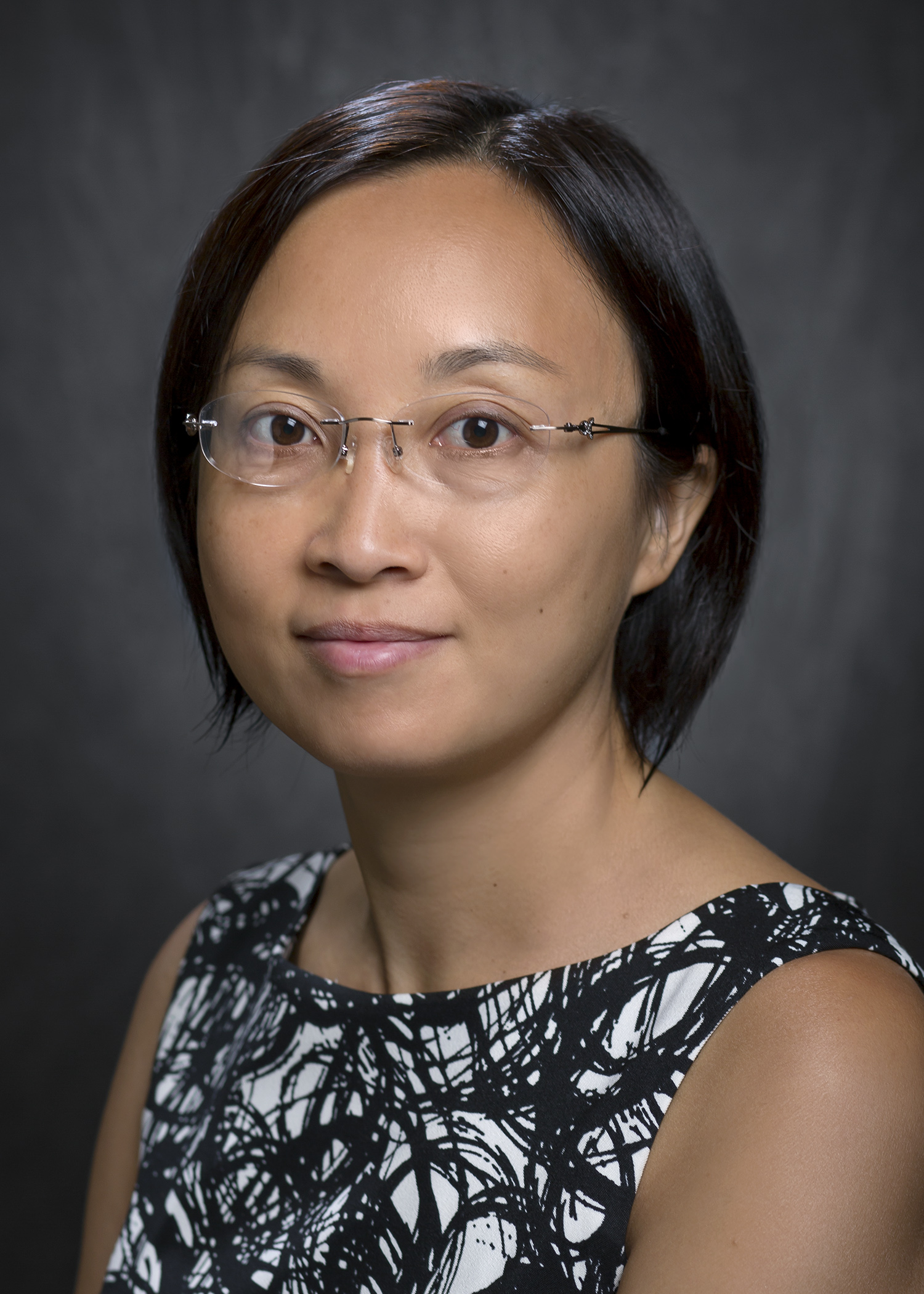Advancing polypeptoid research and investigating how chemistry evolved into biology
March 22, 2023

Illustration of micelles based on the sequence of a defined polypeptoid polymer, demonstrating how the charge pattern can be used to modulate the micellar structure and inter-micellar interaction.
BATON ROUGE – Polymers are materials consisting of large molecules called macromolecules with many repeating subunits. These macromolecular materials touch almost every aspect of our lives. Some polymers exist naturally in the human body, such as protein and DNA, while synthetic polymers are created through chemical reactions.
While polymers have long been exploited for their mechanical and barrier properties, such as in coating, clothing, containers, and films, synthetic polymers with new functionality are increasingly explored for biotechnological or biomedical applications. LSU Chemistry Professor Donghui Zhang is designing, synthesizing, and characterizing biomimetic, bioinspired, and bio-related functional polymers, or b3p.
One class of polymers that the Zhang research group has been interested in is polypeptoids, a class of peptidomimetic polymers. Similar to the molecular structure of polypeptides, polypeptoids are composed of N-substituted polyglycine backbones. A striking difference between polypeptides and polypeptoids is the lack of an amide hydrogen in polypeptoids, making them more robust molecules that can be further tailored by altering the N-substituted substituents.
“We are particularly interested in peptidomimetic polymers because of their ability to fold into higher order structures that reminisce what you see in proteins,” Zhang said. “Unlike most synthetic polymers, these polypeptoid polymers, depending on their building blocks, can develop secondary or tertiary structures while retaining their processability similar to conventional polymers.”
In the early stages, the Zhang group developed synthetic methods to make polypeptoids. Now that the methods are established, the group examines the chemical and structural diversity of polypeptoids and how it will impact the properties of the polymer. They are also interested in manipulating the charge pattern on polymer chains to control polymer assembly and tailor their properties.
A new research area the Zhang research group is exploring involves the origin of life and the evolution of prebiotic polymers, specifically peptides. Prior studies using simple ingredients believed to exist in primordial conditions, such as methane, water, ammonia, hydrogen, and electric charge, were found to generate amino acids, which can form oligomeric peptides with random sequences in the presence of carbonyl sulfide, or COS, a simple volcanic gas. How the oligopeptides with random sequences evolve into long chain polymers, with particular sequences that can increase their own concentration, still remains largely unclear and represents a gap in the evolution of chemistry to biology.
But now, in collaboration with Distinguished Professor Ken Dill at Stony Brook University and Researcher Emeritus Ron Zuckermann at Lawrence Berkeley National Laboratory, the team is investigating how the primordial oligomeric peptides developed longer chains and eventually evolved into proteins.
“Based on our collaborators’ computational simulations, longer sequence-dependent protein-like polymers can evolve from random sequenced oligopeptides by an autocatalytic process under several assumptions. Some oligopeptide sequences can collapse into more compact structures with hydrophobic patches on the surface, reminiscent of protein-like folding. These patches can catalyze elongation of the peptide chains,” Zhang said. “The peptide sequences that have more stable folds degrade more slowly relative to those that do not. The competition between the catalyzed chain elongation and degradation will lead to selection and enrichment of longer polymer chains with particular sequences that can fold like proteins.”
Utilizing prior random polypeptide synthetic methodology, the Zhang research group hopes to design a set of experiments to further quantify the extent of random peptide sequences that can form stable single chain folds and determine whether these stable folds can catalyze any reactions, particularly the amide bond formation that is relevant to peptide chain elongation. The group will explore dynamic reaction cycles that can lead to the selection and enrichment of peptide sequences to form stable single chain folds.
By determining how short chemical polymer chains developed into much longer chains that can encode protein information and lead to primitive biomolecules, Zhang and collaborators hope to reveal the missing link that explains the origins of life on Earth.

Donghui Zhang, William White Tison Professor of Chemistry
About Zhang
Professor Donghui Zhang has an exemplary track record in securing external research funding and publishing in high-impact journals. Her research achievements have been recognized through several awards, including the 2017 LSU Rainmaker Mid-Career Scholar Award, Phi Kappa Phi Non-tenured Faculty Award in 2013, the LSU College of Basic Sciences Faculty Research Award in 2012, a National Science Foundation CAREER Award in 2010, and the Ralph E. Powe Junior Faculty Enhancement Award in 2009. In 2022, Zhang received the highest service-learning course evaluation in the LSU College of Science.
For her outstanding contributions to research and teaching, Zhang was recently named the William White Tison Distinguished Professor in Chemistry. The endowed professorship is in memory of William White Tison, former president of Louisiana State Teachers' College, now Northwestern State University, and chemistry professor at LSU.
Prior to joining LSU faculty in 2007, Zhang obtained a B.S. degree in chemistry from Peking University in 1998 and a Ph.D. in chemistry from Dartmouth College in 2003. She conducted postdoctoral research at the University of Minnesota on the synthesis and characterization of biorenewable polymers.
To learn more about the Professor Zhang’s research focusing on the design, synthesis and characterization of biomimetic, bioinspired, and bio-related functional polymers, visit her research group’s webpage.